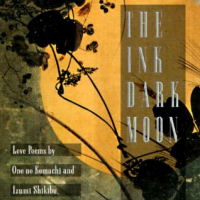No other period in Japan's literary history was as dominated by women as the Heian Period (794-1185). Most Japanophiles know names such as Sei Shonagon ("The Pillow Book") or Murasaki Shikibu ("The Tale of Genji") for their contributions to the world of literature, but Izumi Shikibu (Shikibu is a title, not a name) and Ono no Komachi should be added to that list.
The Ink Dark Moon, by Ono no Komachi and Izumi Shikibu Translated by Jane Hirshfield Mariko Aratani.
Vintage Classics, Poetry.
Izumi, like Murasaki, was part of the court of Empress Akiko and Komachi wrote 100 years earlier. Together they charted a course that Japanese poetry would follow for centuries to come. "The Ink Dark Moon" is a collection of their poetry, which made its e-book debut on Jan. 21 — a testimony to their lasting popularity.
The poems themselves are masterly forms of the 31 syllable tanka (meaning "short song") verse, with particular finesse on the pivot word and evocative imagery.
With informative notes in the appendix, these poems take us to the back corridors of Heian Period life and reveal the sexual intrigues that so often occurred under the cover of darkness. In a world where every action — from amorous pursuits to returning a fan — was accompanied by poetry, the seductive, free-spirited erotic environment unfolds through these sensuous poems. Such laments reverberate through time: "In this world / love has no color — / yet how deeply / my body / is stained by yours."
Read archived reviews of Japanese classics at jtimes.jp/essential.


















With your current subscription plan you can comment on stories. However, before writing your first comment, please create a display name in the Profile section of your subscriber account page.